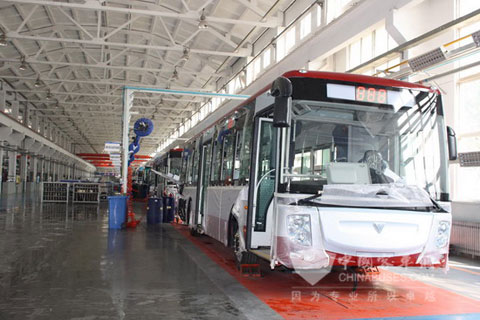Vehicle market see hot sales scene again in late 2009. But when interviewed in Foton, Journalist was told that even "Vehicle to the countryside”, old-for-new-service, and subsidies for new vehicle purchase etc incentive policies can last, but its marginal effects to vehicles sales is fading since forward buying and no more increment requirements. So maybe we cannot see such blowout sales scene in 2010.
As a leading company in domestic commercial vehicles, Foton seized big commercial opportunity by policies this year. The sales volumes of complete vehicles reached up to 496,600 units, up 34.8% year on year, of which sales volumes of light trucks were 398,100 units, up 34.8% year on year, while medium and heavy trucks 67,600 units, up 20.8% year on year, which were the best sales results since founded thirteen years ago.

Foton Assembly Line
However, sales stuffs in Foton admit it’s difficult for light medium and heavy trucks getting growth substantially if there are no incentive policies. Light trucks are mature sector, so it’s normal to keep 5%-10% annual growth rates. But this year we witness up to 17.35% growth rate from Jan. to Sept. because of incentive policies. Forward buying needs for buyers are afraid of withdrawal of these incentive policies, so sales volumes next year will be influenced to some extent. On the other hand, there won’t so many rural migrant workers to go back home and buy vehicles as more and more urban employment needs. So, there is only little possibility of substantial increase in light truck industry.
And the ascending costs pressure is another difficulty facing Foton. The plummeting prices of steels reduced manufacturer costs of entire vehicles directly, but the prices of complete vehicles were not down, so level of profitability of Foton was promoted. According to statistics, synthesized level of profitability of Foton was 7.7%, 8.7%, and 8.1% in the past three years, and this year the number is 12.2%. So Foton will face bigger and bigger costs pressure for the stronger inflation expectations and higher PPI index.
In addition, a new round expansion of domestic car makers started with vigorous market needs, so expansion of industry capacity may bring severe competition.